A Theatre, Hotels and a House - the Amazing D'Oyly Carte's
Great Britain has a history of influencers the D'Oyly Carte family is one of them. They shaped London, and the Gilbert and Sullivan history from Devon to Harrogate. Learn more with this article for a small group educational tour for senior couples and mature solo travellers.
3 Oct 21 · 10 mins read
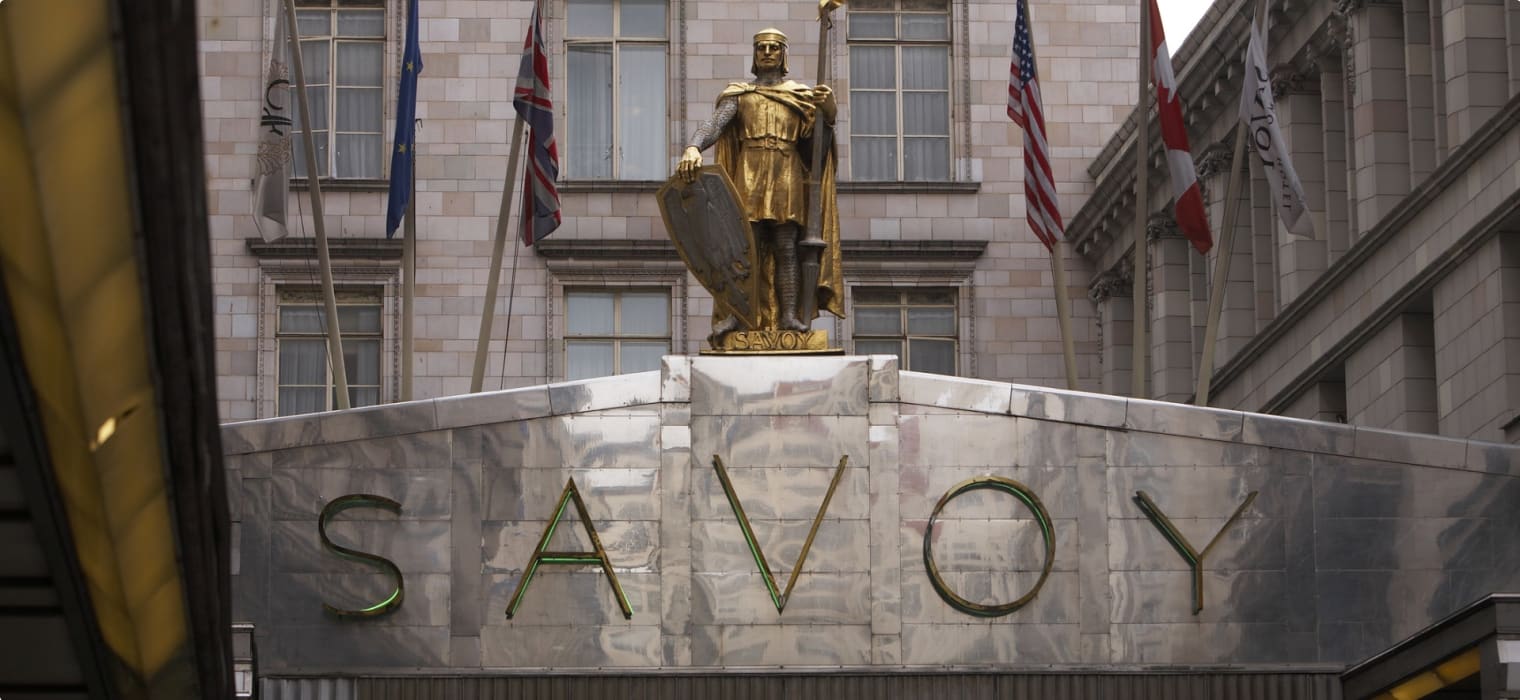
A Theatre, Hotels and a House – the Amazing D’Oyly Carte’s
For Odyssey Traveller, the company’s small group tour collection concentrates on taking the senior couple or mature solo travelers on a guided tour with a knowledgable tour guide to places with the hidden gem stories. This article starts in Victoria’s Great Britain and is about the D’oyly Cartes family, whilst part tragedy is also an incredible back story to the small group experience offered as part of a day tour to a National trust places on the Devon and Cornwall small group tour. It also provides an interesting story to include in our small group tour of London. For those travellers enjoying the Gilbert and Sullivan small group experience then this piece extends their knowledge about the the partnership to form the D’Oyly Carte Opera Company.
In South Devon, across the River Dart from Dartmouth, is a magnificent garden and an Art Deco house, Coleton Fishacre, now owned by the National Trust. It was built by Rupert and Dorothy D’Oyly Carte as a country home in the 1920s.Travellers on the Odyssey Traveller accompanied small group tour of Devon and Cornwall will visit this beautiful property and glimpse a final chapter in the story of an amazing family with a connection back to John of Gaunt, Duke of Lancaster and son of Edward III, and ancestor of both the Lancaster and Tudor monarchs of Britain.
The journey began with an opportunity.
In 1878, Richard D’Oyly Carte was a 34 year old theatre impresario, whose father ran a musical instrument retailing business. Richard worked for his father while also acting, writing and composing operettas. These were not really successful, so he set up as a theatre agent in the back room of his father’s shop and in this position he came across two men whose name, together with his, would become famous for over a century. D’Oyly Carte formed a company, the D’Oyly Carte Opera Company, with WS Gilbert and Arthur Sullivan which, after battles over copyright infringements, became the sole producer of the G&S brand across the world.

In order to show the G&S operettas to their best, D’Oyly Carte decided to build the Savoy Theatre on the River Thames between the Temple Church and Westminster. This had been the site of John of Gaunt’s medieval home, the Savoy Palace ‘the fairest manor in Europe’ which had been pulled apart and destroyed in the Peasants’ Revolt of 1381. By 1881, the Savoy Theatre was ready. D’Oyly Carte had broken many established theatre conventions and controlled the luxury by not contracting out the refreshments, running the bar himself, serving good wine and ‘unadulterated’ malts, and good coffee. He lit the Theatre with electricity generated by an early steam engine and it became the first public building in the world to be lit entirely by electricity.
In order to modernise ‘dreary central London‘, D’Oyly Carte built the Savoy Hotel across the lane from the Savoy Theatre. His aim was to build the ‘Hotel de Luxe of the World’. It was completed in 1889. The Australian opera singer, Dame Nellie Melba, had said that the food in London hotels was execrable, the carpets were dirty, the menus medieval and the service was insulting, but she loved London‘s Savoy Hotel and became such a regular that the chef, Escoffier, enticed to London by D’Oyly Carte with César Ritz created two desserts for Melba – Melba toast for when she was dieting and Peaches Melba for when she was not.
Other famous guests of the Savoy Hotel were Claude Monet who painted ‘Waterloo Bridge’ from Room 6B and Whistler who stayed for months working on lithographs and paintings. One infamous, but brilliant, guest was Oscar Wilde whom Richard D’Oyly Carte managed and made internationally famous. While he was staying at the Savoy, Wilde had various liaisons with young men, but when he became involved with Bosie, Lord Alfred Douglas, Bosie’s father, the Marquess of Queensberry, sent a card to Wilde accusing him of being ‘a ponce and a somdomite (sic)’. Against advice, Wilde sued the Marquess for libel, but this made the whole issue public and led to his arrest for gross indecency and prison for two years with hard labour. The circle was even tighter as Bosie and D’Oyly’s son Rupert had been at boarding school together and exchanged intimacies with each other in writing and physically.
At this time dinner at the Savoy, for two including champagne, cost £3/5/6 (about $690 AUD today).
The successes of the theatre and the hotel encouraged D’Oyly Carte to expand and he bought Simpsons in the Strand, the Marivaux in Paris, and a boarding house near Hyde Park which became Claridge’s. One of the successes of the Savoy was that unaccompanied women were welcomed. The pastel décor and lighter meals soon encouraged groups of women to take lunch or afternoon tea regularly.
In 1893, Rupert came straight from boarding school to become his father’s assistant. In 1901, Richard D’Oyly Carte died, aged 56, from a heart attack. He had been a man of vision, a risk taker who paid fastidious attention to detail and who possessed what seemed like inexhaustible energy. After setbacks with losses from the Operas, a significant theft by Oscar Ritz that caused shock, his estate was valued at £250,000, about $87.9m AUD.
Rupert D’Oyly Carte took over as Chairman in 1903 at 27. He was responsible for the Savoy Hotel, Claridge’s, the Berkeley, Simpson’s in the Strand, Marivaux in Paris and the Grand Hotel in Rome. Like his father he attracted world-class chefs. By the end of 1904 he had sanctioned £1m ($216m AUD) of expansions such as the new blocks on the Strand for Britain‘s first serviced apartments whose residents included Sarah Bernhardt, Lillie Langtree, Harry Selfridge, Sir Thomas Dewar (Scottish whisky heir) lived there for 40 years, and George Frohman.
An interesting fact is that Rupert wanted bespoke beds for the Savoy and the design is still used by a company called Savoir Beds which was formerly The Savoy Bedworks. He transformed his father’s courtyard into the Lancaster Ballroom and Enrico Caruso sang at the opening. And Savoir beds remain as an independent business today.
While Rupert focussed on the hotels, the Opera Company was run by Helen, Rupert’s stepmother. By the mid twentieth century what had started as a company to perform ‘popular’ music as opposed to high opera was lauded as a national institution. During the twentieth century, the company gave at least 40,000 performances.
At 31, Rupert married Lady Dorothy Gathorne-Hard, the 18 year old daughter of the Earl of Cranbrook. Helen died in 1913 at 60.
At the start of WWI, Rupert volunteered for the Royal Navy, and was chosen as a King’s Messenger which involved the undercover movement of documents across Europe. Before intelligence services became more professional, journalists and businessmen with legitimate reasons to travel were recruited. Even through the war, the hotels thrived as many aristocrats were forced to sell their London mansions (shortage of staff and the increasing costs of upkeep). A suite at Claridge’s or the Savoy for the Season was cheaper.
Like his father, Rupert had a keen eye for trends and in 1918, eager to benefit from the gramophone, he supervised recordings of the operas, starting with The Mikado (HMV). In 1926 the BBC opening night broadcast of The Mikado was heard by 8 million people.
During the 1920s central London was full of Americans – actors, bohemians, businessmen and the nouveau riche such as Isadora Duncan, Lillian Gish, the Barrymores, studio moguls from Warner Bros and Goldwyn Mayer. F. Scott Fitzgerald set a story ‘Two Wrongs’ at the Grill and P.G.Wodehouse had Bertie Wooster wandered between the Grill and his club. Rupert’s flair for live entertainment meant he secured good bands that were synonymous with the dance crazes of the 1920s. The BBC studio closed at 10.30pm and then broadcast from the Savoy. It was in the Lancaster Ballroom in 1923 that Gugliemo Marconi made the first broadcast to USA.
Coleton Fishacre
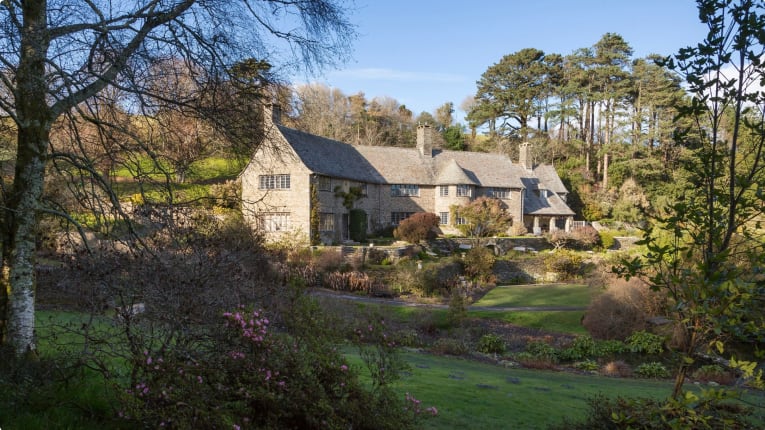
Coleton Fishacre. Sailing along the coast on a Devon holiday, Rupert saw a secluded cove, Pudcombe Cove, and decided he wanted it as a secret retreat for Dorothy, Bridget (16) and Michael (14). Stoned was quarried from the 25 acres of land and a house was built into the curve of the hillside. The house had 11 bedrooms and was Victorian on the outside and Art Deco inside. In 1926, the family moved in to share with the Lalique cut-glass lights, Royal Doulton bathtubs and a rosewood grand piano. All the house windows faced out to sea, but because of the cove and the trees, the house was not visible from the sea. Rupert and Dorothy created a sub-tropical garden because of the Gulf Stream and grew microclimate plants, lawns, ponds, glades, waterfalls, camellias, snowdrops, blue bells, wild garlic and magnolias. Dorothy made it her home and Rupert spent the week in London and caught the train to Devon for weekends.
Michael, Rupert and Dorothy’s son, was killed in a road accident in Zurich. His death shattered the family and even the garden was divided. In his half, Rupert continued to grow his bright colours at the sea end while Dorothy grew her pastels at the far end. Bridget’s life changed as she had to step into the heir’s shoes. While on a trip to the West Indies, Dorothy met her next husband in her late 1940’s, separated from Rupert, and left England to join St Yves de Verteuil in Tobago, leaving Rupert and Bridget to run the D’Oyly Carte Empire.
In 1939 Rupert at 63, wife absconded, son dead, had to steer through World War II. The Government ordered all theatres closed, but Richard decided to concentrate on keeping the hotels open. Bridget stayed at Coleton Fishacre during the war.
Getting through the second world war.
The Savoy endured bomb damage, rationing, air raids, staff shortages and an initial decline foreign visitors. Noel Coward had moved into the Hotel and was dining during a raid which blew the bandleader off the stage. Coward left his table and went to the piano to belt out some songs.
The Pinafore Room was a private dining room in a corner of the Hotel. Winston Churchill used to dine there fortnightly and formed the “Other Club”. He and nearly every Prime Minister of the twentieth century was a member except for Anthony Eden. To get around rationing and shortages, the Hotel set up its own poultry farm in Berkshire to provide chicken and eggs.
The Savoy became home to Lord Mountbatten, Charles de Gaulle, and President Truman came to stay. Once America joined the war there were celebrities such as John Wayne, Clark Gable in his US Army uniform), Danny Kaye, Groucho Marx, Gina Lollobrigida, Sophia Loren, Frank Sinatra (who played the piano) and Joseph Kennedy.
In 1945, the sandbags, blast walls, girders were dismantled. After his election defeat, Winston and Lady Churchill moved into Claridge’s. One of the many eligible young women encouraged to socialise was 20 year old Princess Elizabeth. In 1946, she first sighted Prince Phillip at a Savoy wedding reception. For their wedding in 1947, the Savoy had three kings, four queens and a horde of princes, princesses, dukes and duchesses staying in the hotel .
End of a dynasty in four more decades
In 1948, Rupert died of a stroke, leaving only Bridget as the sole member of an amazing family. Her first big event was the 1953 Coronation of the new Queen of Great Britain, and the Savoy’s Coronation Ball for which tickets were sold at £329 or $1400 AUD a ticket.
Bridget had no interest in the hidden gem of a house and sold Coleton Fishacre to a car salesman from Hampstead and bought a new hideaway in Buckinghamshire, but stayed mostly in rooms at the Hotel where she lived an abstemious life while around her the Hotel was making record profits, but she remained a shy, middle-aged divorcee who rarely left her rooms. She left much of the running of the Savoy, the hotel chain and the Board to Hugh Walter Kingwell Wontner who was an English hotelier and politician. He was managing director of the Savoy hotel group from 1941 to 1979 and its chairman from 1948 to 1984, continuing as president until his death. He was also chairman of the Savoy Theatre from 1948 until his death. He was knighted in 1972. In 1973-74, he was Lord Mayor of London. As chairman of the Savoy Theatre, he personally supervised its rebuilding after it was destroyed by fire in 1990. Bridget oversaw the theatrical operations.
Agatha Christie was in the Savoy Restaurant in 1958 with 1,000 guests to celebrate her play, The Mousetrap, the world’s longest running play, interrupted only by COVID lockdowns. Her home, Greenway, is just a few kilometres inland from Coleton Fishacre.
Other famous guests of the Savoy were Charlie Chaplin when he no longer felt welcome in the USA, the Beatles, Rolling Stones, Bob Dylan, Katherine Hepburn, Marlon Brando, Cary Grant, Jane Fonda, Audrey Hepburn, Ronald Reagan when an actor, Judy Garland, Muhammed Ali and Dr Martin Luther King Jnr. Christian Dior and Valentino held fashion shows in the ballroom.
After the war, the new wealthy were Greek shipping tycoons who bought up American ships at discounted prices. Aristotle Onassis and Stavros Liarchis stayed at the Savoy. Onassis became a close friend of Winston Churchill and the entertained at the Savoy.
In 1961, the D’Oyly Carte copyright on Gilbert and Sullivan works that had provided funds for the family since 1875, ran out. Bridget D’Oyly Carte no longer had exclusive performance rights for the operas and for first time had to compete with other companies. Touring became very expensive. In 1975, to celebrate the centenary of the first D’Oyly Carte opera, Trial by Jury, every G&S opera was performed at the Savoy Theatre in chronological order to fans from around the world. Bridget was made a Dame. Even though Harold Wilson declared the D’Oyly Carte ‘part of our national birthright’, increasingly Bridget was paying for performers, orchestra, accommodation and travel herself.
At the end of a sold-out season, the D’Oyly Carte Opera Company closed on 27 February 1982 as Bridget had been running it as a personal loss of £2,000 a week since the late 1970s. In its 107th year, Christie’s auctioned off 1,500 of its costumes.
In 1982 Coleton Fishacre passed to the National Trust. Bereft of furnishings, the Trust bought it only for the gardens and coastline. Only later was the house considered worth restoring.
In May 1985, Dame Bridget D’Oyly Carte, the last of her family, died of lung cancer. Her £17 million estate, today £52 million was shared with charities, employees and friends.
In three generations, the D’Oyly Carte’s had pioneered the luxury hotel, the modern theatre, propelled Gilbert and Sullivan to perpetual stardom, made Oscar Wilde an international celebrity, inspired P G Wodehouse stories and popularised early jazz, electric lights and Art Deco.
The Savoy hotel is now managed by Fairmont Hotels and Resorts. It has been called “London‘s most famous hotel”. It has 267 guest rooms and panoramic views of the River Thames across Savoy Place and the Thames Embankment. The hotel is a Grade II listed building. The Savoy Theatre is now operated by the Ambassador Theatre Group.
Related Articles
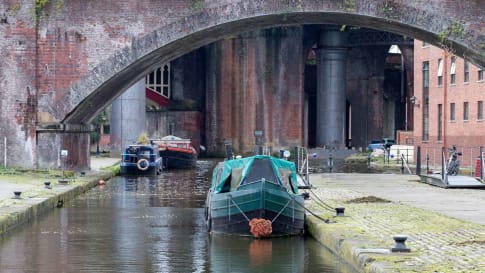
Britain: First Industrial Nation
Britain: The First Industrial Nation In the mid-18th century, the Industrial Revolution was largely confined to Britain. Historians and economists continue to debate what it was that sparked the urbanisation and industrialisation that would change…
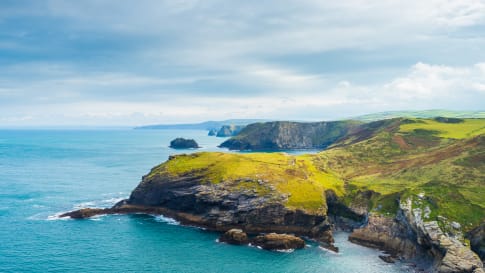
Highlights of Devon and Cornwall
Article for small group tour of mature and senior couples or single travellers interested in the key places of Devon and Cornwall such Tintagel, St Michaels Mount, Penzance, the Scilly isles and more.
Personalities from Queen Victoria's Britain
Article for senior couples and mature solo travellers exploring Queen Victoria's Empire including Britain and the personalities. Supports small group educational tour about the monarch and the industrial revolution.
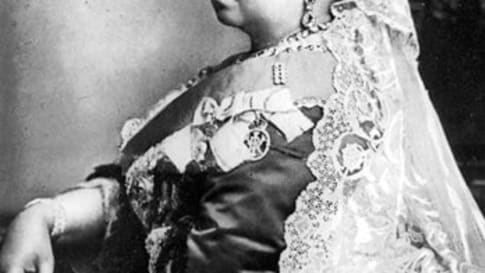
Personalities from Queen Victoria’s Britain
Article for senior couples and mature solo travellers exploring Queen Victoria's Empire including Britain and the personalities. Supports small group educational tour about the monarch and the industrial revolution.
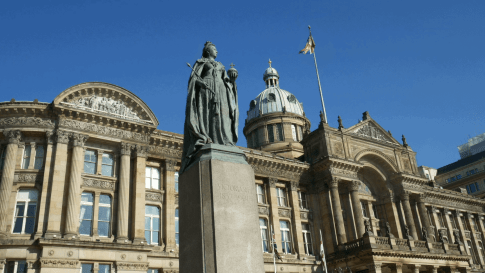
Queen Victoria's Britain: The Definitive Guide for Travellers
Article for educational small group tours of England for senior couples and mature single travellers. Queen Victoria, Britain's longest serving monarch through most of the Industrial revolution and rural life and the Empire is discussed in this article.

Queen Victoria's Britain part 2: The Definitive Guide for Travellers
Queen Victoria’s Britain (Part 2 of 2) This two-part article on Queen Victoria’s Britain was prepared by one of our Odyssey Program Leaders, Mal Bock. She will be leading this small group tour especially designed for…
Related Tours
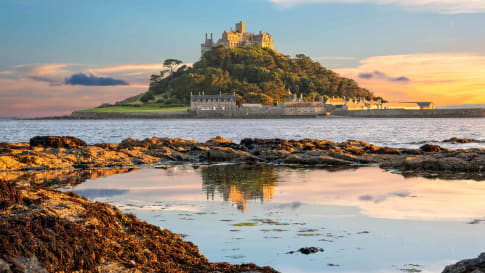
17 days
Sep, AprDevon and Cornwall, England
Visiting England
Our guided small group tour of Devon and Cornwall in England, designed for mature and senior travellers who are travelling with their partner or as a solo traveller. A journey filled with medieval treasures, charming fishing villages in the north Cornish coast, stunning cliff-top coastal views of the blue Atlantic, and atmospheric destinations traditionally linked to the legends of King Arthur.
From A$15,995 AUD
View Tour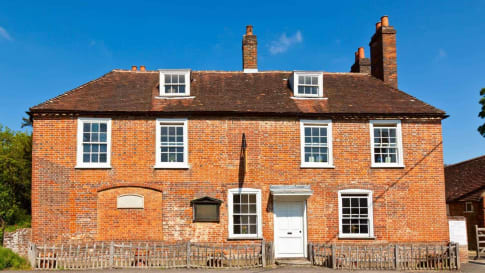
22 days
AugDiscovering the art and literature of England: Jane Austen, Shakespeare, and more
Visiting England
Stratford upon Avon, Shakespeares birthplace and Anne Hathaway's cottage as well as the Lake district a UNESCO World site and Dicken's London are part of guided tour for a small group tour of like minded people learning about the art and literature of England. Your tour leader and local guides share day tour itineraries to create a unique travel experience.
From A$17,765 AUD
View Tour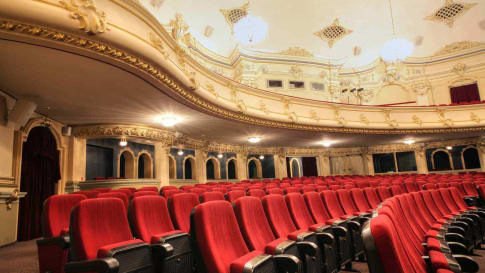
9 days
AugGilbert and Sullivan Festival Small Group tour
Visiting England
A 9 day tour with a tour director and local guide explore the Victorian music of Gilbert and Sullivan. We visit on this journey, Manchester, Harrogate, Oxford & London, attending the Gilbert & Sullivan festival and places of historic interest.
From A$9,350 AUD
View Tour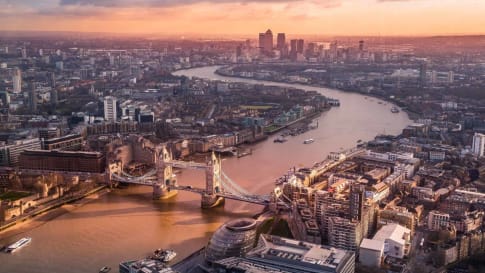
6 days
Apr, SepLondon Short Tour
Visiting England
A small group tour of London is a collection of day tours that visit and explore through the villages of the city. This escorted tour includes a journey out to Windsor castle. We explore Contemporary and learn about Roman Walled city, Medieval, Victorian London and the contemporary city today.
From A$6,995 AUD
View Tour

